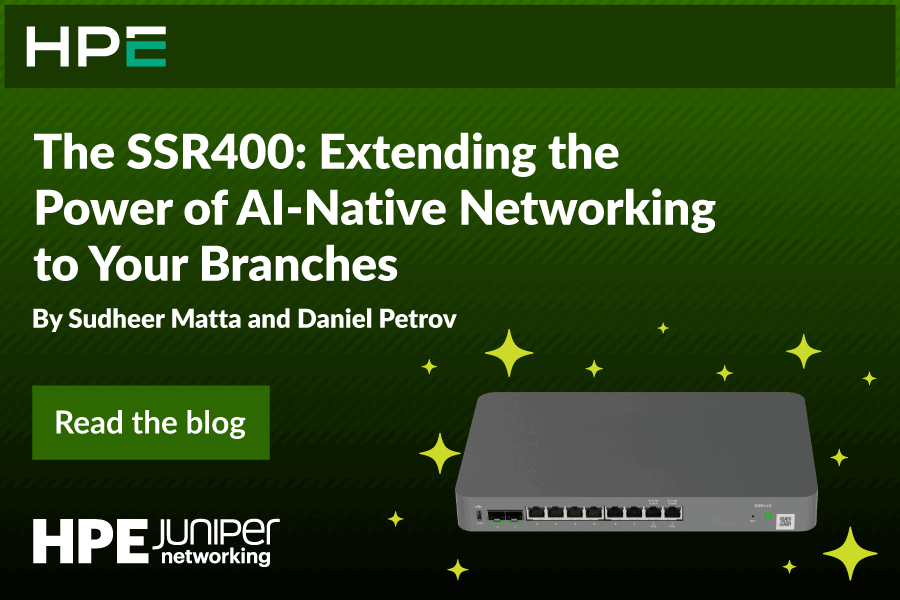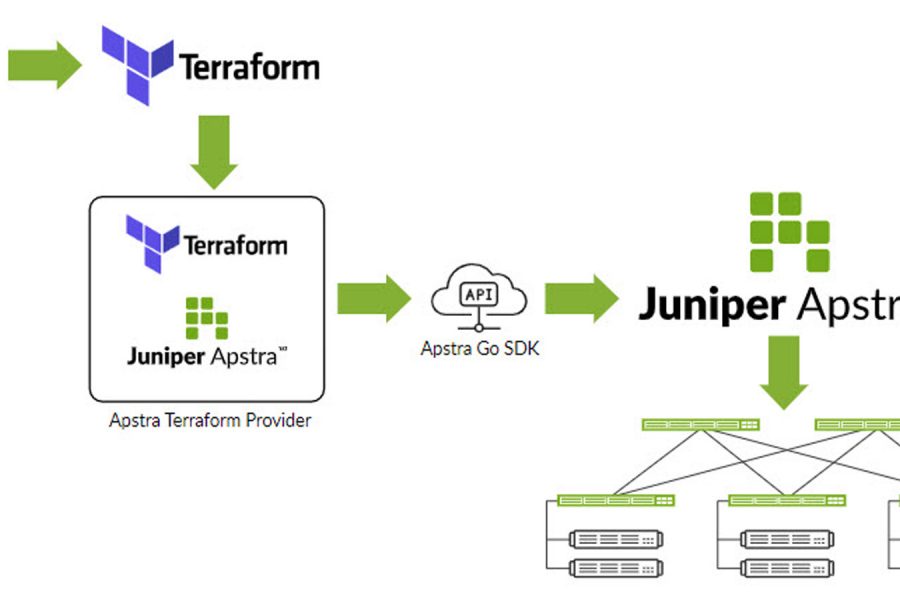Today, we unveiled enhancements for orchestration and advanced analytics of any cloud and any workload and across multi-vendor environments along with a path to help companies more deliberately plot a course to their multicloud future. With these developments, Contrail Enterprise Multicloud is a single platform for all of: overlay and underlay management; heterogeneous compute environments, including bare metal servers, virtual machines, containers and networking devices; private and public clouds; orchestration of networking and security policies, including microsegmentation; and advanced analytics.
This means you can manage workloads on-premises and in the cloud. In the public cloud, they can run on AWS, Azure and GCP. Those workloads can run on VMs or containers. And you can manage the overlay along with the underlay that might span Juniper Networks and other equipment. You can provision, execute workflows and monitor everything end-to-end, regardless of where the device or workload resides. And the whole infrastructure is intent-driven from the ground up.
The key word in all of this is AND. Contrail Enterprise Multicloud is a common platform for all of this. And because it’s all supported, it means you can turn up specific use cases as your enterprise evolves. Perhaps it’s underlay management in a heterogeneous private data center now, expanding to a public cloud and beyond. Or maybe your DevOps teams have multicloud requirements today, such as security and segmentation for a Kubernetes environment, and gaining benefit in on-premises infrastructure is future cost savings. Flexibility is about AND, and that’s where the robustness of Contrail Enterprise Multicloud shines.
Multicloud vs. Multiple Clouds
Why does this breadth matter now to IT leaders? The distinction between simply using multiple clouds and operating in a multicloud environment highlights today’s challenges. Many companies begin their move to cloud with the adoption of SaaS offerings. It is not uncommon to see Office365, Salesforce or Workday as initial baby steps for transitioning to the cloud.
As companies look to take further advantage of the cloud, they turn their eyes to more complex applications. For some, moving to the cloud is an exercise in lift-and-shift. Applications are hosted in AWS, Azure or GCP rather than within a private data center. And as companies explore the operational nuances of various clouds, they might favor one or another cloud for specific applications, typically because of economic or performance requirements.
But the promise of multicloud is not about fracturing the IT environment into cloud-specific shards that encompass infrastructure and operations for bounded domains. Multicloud is about managing resources as a single, cohesive infrastructure —regardless of whether they reside in a private cloud, public cloud A or public cloud B.
End-to-End
In February, Juniper introduced our focus on helping enterprises navigate their way to a secure and automated multicloud. Our perspective maintains that to control an entire multicloud infrastructure, you need to consider more than just the data center or the public cloud. To control the overall experience and ensure that security is uniformly applied, it means managing the on-ramps to the cloud that exist within both the campus and branch.
In the announcement of the expansion of our portfolio solutions for connectivity across all of the data center, public cloud, campus and branch, we extended the notion of multicloud-ready to the entire enterprise. In essence, we were grounding the conversation in the end-to-end nature of what multicloud will certainly have to be and introducing platforms upon which we can build the rest of our multicloud solution.
Top-to-Bottom
While the underlying connectivity pieces across all places in the network are required, allowing packets to flow is necessary but not sufficient. To truly operate in a multicloud architecture, you need more than just connectivity.
Managing an expansive infrastructure as a cohesive unit requires end-to-end orchestration as a means of using policy to dictate the experience. It needs end-to-end visibility if operations are to be automated. And it demands end-to-end security to ensure that users, applications and data are protected.
Ultimately, multicloud support has to be more than just end-to-end—it has to also be top-to-bottom. There’s a tiny subset of technology vendors that have both the breadth and depth to drive a multicloud solution.
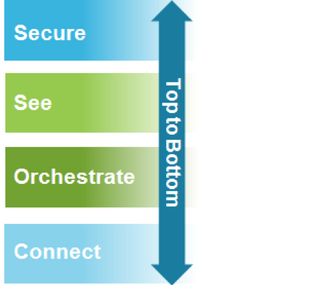
Simplicity in Multicloud
If companies want to exploit the value of multicloud, they have to thread the thinnest of needles. Migrating forward requires new technology, but if it comes at the expense of more complex infrastructure, the advantages of the cloud will have been sacrificed for the practicalities of operations.
Fundamentally, the move to multicloud has to be about both enabling new capabilities and simplifying the enterprise IT endeavor. At Juniper, we simplified connectivity by developing a common platform in Junos that spans virtual and physical routing and switching platforms running across a mix of merchant and custom silicon, spanning x86 to common switching silicon to the highest-scale silicon available anywhere.
With today’s announcement, we extend the premise of a common platform to the orchestration and visibility layers, leveraging Contrail Enterprise Multicloud as an end-to-end multicloud enabler, capable of orchestrating and seeing activity across a broad, multivendor environment. Where enterprises have typically resorted to two or more controllers or management systems to manage overlay, underlay and network devices, Contrail Enterprise multicloud provides a single solution for both monitoring and managing multicloud environments.
Contrail Enterprise Multicloud
In Contrail Enterprise Multicloud, we already have one of the world’s most widely deployed virtual network controllers. We have added end-to-end policy and control capability and deep bare metal server and network device orchestration and public cloud integration to grant enterprises ubiquitous automation of the multicloud for:
- Any cloud—Private cloud data centers, public cloud (AWS, Azure, GCP, Oracle and so on) and VMware private clouds
- Any workload—Bare metal servers, public cloud instances, virtual machines, containers and physical networking devices
- Any deployment—Greenfield or brownfield, single- or multi-vendor
This orchestration platform supports the entire lifecycle of network and security policy and operations, from Day 0 builds, to upgrades, to service management and assurance.
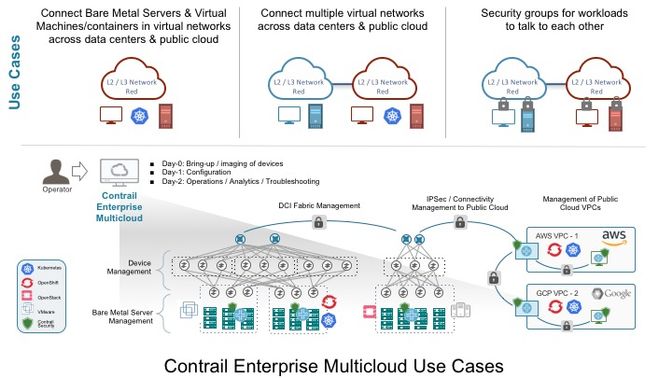
All About the And
When I talk to enterprises, here is the reality for most moving toward cloud and multicloud: I believe everyone is excited about Kubernetes, but there are gaps relative to what enterprises have experienced with their existing VM-based environments. They have to account for things like automation and security, but not at the expense of yet more complexity. In essence, they are looking for cloud-scale infrastructure without having to make cloud-scale investments in terms of time, people and dollars. And they can’t wait to leverage automation until they move to a more modern container-based infrastructure or network overlay. They need it now for the bare metal servers, switches and routers, without the fear of landing at a cul-de-sac which becomes an obstacle to future migration to modern containerized and microservice based architecture and overlay networking.
This is a huge part of why I joined Juniper. Having managed these exact problems from the customer side, it’s obvious that solving these pain points for enterprises is key to any mass migration towards multicloud. In essence, I want to deliver the infrastructure that only the handful of hyperscalers like Google, Amazon, Microsoft or Facebook can build, to all enterprises, without having to build a development or operations team that only the hyperscalers can afford. In Contrail Enterprise Multicloud, we intend to bring the simplicity of our open platform engineering with the capabilities of a hyperscale infrastructure.
Framing the Journey
As IT teams consider how they will make their way to the cloud, we believe that the evolution will not be made in a single step and that enterprises need to use every upgrade and refresh opportunity to ensure that they are multicloud-ready.
The path to multicloud is more than a single activity. It requires the thoughtful coordination of many decisions over multiple years. In some ways, the individual components, while important, are just contextual enablers of a broader journey that requires so much more than just new products.
Evolution will naturally encompass changes to overarching architecture, to the products and tools that underpin that architecture and to the people and process that manage it all. To that end, Juniper has also unveiled a model to help guide customers through the various steps required to achieve a multicloud infrastructure.
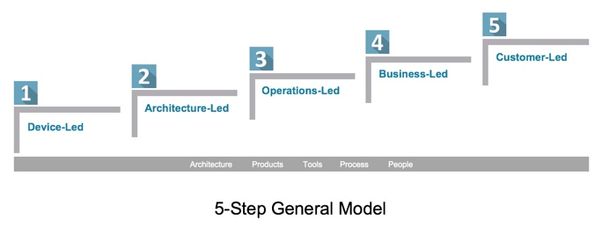
At the highest-levels, the model serves as a general compass as companies evolve from predominantly device-led to architecture- and operations-led IT, en route to eventually business- and customer-led. At a company level, it’s a useful tool for framing the discussion with individual teams so that they eventually converge around a multicloud infrastructure.
But migrations are not about general movements. They require specificity. They must be grounded in tangible actions that are underpinned by capable technology. And so we have developed models for each place in the network: data center, campus, branch and public cloud. In today’s announcement, we are revealing the data center multicloud migration, which Mike Bushong, vice president of enterprise and cloud marketing, will talk about in more detail in his blog on April 26.
Today, Juniper has taken a significant step toward enabling a secure and automated multicloud. We are thrilled to be introducing new products, services and tools to help enterprises along this journey.
If you’d like further information on how to overcome complexity in the era of multicloud please visit www.juniperemea.net/multicloud.























